If your Monstera adansonii leaves are turning yellow, you’re probably wondering why and what you can do about it. Keep reading to learn more about the causes of yellow leaves on your Monstera adansonii and what you can do to solve the problem.
Causes of Monstera adansonii Leaves Turning Yellowing
If your plant is getting too much water, its leaves will also start to turn yellow. If your plant isn’t getting enough nitrogen, phosphorus, or potassium, its leaves will start to turn yellow. Finally, if your plant is infected with a virus or fungus, its leaves will turn yellow. If your plant is getting too much direct sunlight, its leaves will start to turn yellow. One of the most common reasons for Monstera adansonii leaves turning yellow is a lack of nutrients. Another common cause of yellowing leaves is too much sun.
Incorrect Watering
One of the most common reasons for yellowing leaves on a Monstera adansonii is incorrect watering. Over-watering can cause the leaves to turn yellow and drop off, while under-watering can cause the leaves to turn brown and dry out. The best way to water a Monstera adansonii is to wait until the top inch of soil is dry, then water thoroughly until water runs out the bottom of the pot.
How to Fix
If your Monstera adansonii leaves are turning yellow, don’t despair! There are a few things you can do to fix the problem.
First, check the soil. If the soil is too dry, the leaves will start to turn yellow. Monsteras like to be in well-draining, moist soil. Water the plant and see if that helps.
Make sure the plant is in a pot with good drainage and that you’re not overwatering it. If the soil is too wet, the leaves will also turn yellow.
Move it to a spot where it will get the right amount of light. Finally, check the light. If the plant is in too much or too little light, the leaves will turn yellow. Monsteras like bright, indirect light.

With a little troubleshooting, you should be able to get your Monstera adansonii back to its healthy, green self in no time!
Wait For the Soil to Dry in Between Watering
Overwatering can lead to root rot, which can kill your plant. If your Monstera adansonii leaves are turning yellow, it could be due to overwatering. Be sure to wait for the soil to dry in between watering to prevent this from happening.
Adjust Watering Frequency
If your Monstera adansonii leaves are turning yellow, it is likely due to incorrect watering. Monsteras require high humidity and well-drained soil, so be sure to water your plant regularly and mist the leaves to increase humidity. You may also need to adjust your watering frequency, as overwatering can also cause yellowing leaves.
Water Your Plant Thoroughly
Water Your Plant Thoroughly

Also, check to see if the soil is too dry; if it is, you may need to water more frequently. Make sure to water your plant thoroughly, and if possible, allow the water to drain out completely. If your Monstera adansonii leaves are turning yellow, it could be due to a lack of water.
Assure Good Pot Drainage
If the pot does not have a drainage hole, you can make one yourself. If the pot does not have good drainage, the roots will rot and the plant will die. Just use a drill to make a hole in the bottom of the pot. The best way to assure good drainage is to use a pot with a drainage hole in the bottom. One of the most common problems with Monstera adansonii is poor drainage.
Empty the Saucer Under The Pot
The most likely culprit is a build-up of water in the saucer under the pot. If you notice your Monstera adansonii leaves turning yellow, it’s important to take a closer look at the plant. When water collects in the saucer, it can cause the roots to rot, which in turn will cause the leaves to turn yellow and eventually drop off.
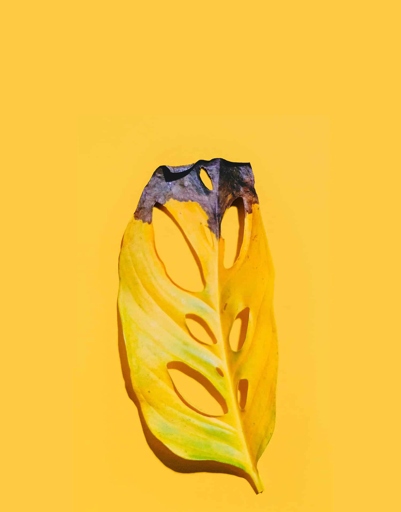
If you notice the leaves turning yellow, empty the saucer immediately and allow the plant to dry out completely before watering again. With a little care, you can keep your Monstera adansonii healthy and happy for years to come. To prevent this from happening, it’s important to empty the saucer under the pot on a regular basis.
Water Quality Can Lead to Yellow Leaves
Chlorine and other chemicals in tap water can build up in the soil and lead to nutrient deficiencies, which can cause yellowing leaves. If your Monstera adansonii leaves are turning yellow, it could be a sign of water quality issues.

To ensure your plant is getting the best possible water, use filtered or distilled water. You can also let tap water sit for 24 hours before using it, which will allow the chlorine to evaporate.
If you suspect your water quality is to blame for yellow leaves, try changing your watering habits and see if there is any improvement.
How to Fix
Use a balanced fertilizer and follow the instructions on the package. The first step is to check the soil to see if it is dry. If your Monstera adansonii leaves are turning yellow, it is likely due to a lack of nutrients. If the soil is not dry, you may need to fertilize the plant. If the soil is dry, water the plant and wait a few days to see if the leaves return to their normal color. You should also check the plant for pests. If you see any pests, remove them and treat the plant with an insecticide.
Use Good Quality Water
The ideal temperature is around room temperature. You also need to make sure the water is not too hot or too cold. This means using water that is free of chlorine, fluoride, and other chemicals. If you want your Monstera adansonii to stay healthy and vibrant, you need to use good quality water.
You can also use a water filter to remove the chemicals. If you use tap water, you can let it sit out for 24 hours to allow the chemicals to evaporate.
If you use well water, you need to have it tested regularly to make sure it is free of contaminants.

Using good quality water is essential to keeping your Monstera adansonii healthy and happy.
Use Room Temperature Water
This will help ensure your plant stays healthy and happy. Room temperature water is best for this plant, as cold water can shock the system and cause the leaves to turn yellow. If you notice your Monstera adansonii leaves turning yellow, it could be due to the water you’re using. If you’re not sure what temperature the water is, let it sit out for a bit so it can reach room temperature.
Light Exposure
If your Monstera adansonii leaves are turning yellow, it’s likely due to too much or too little light. When it comes to houseplants, one of the most common problems is light exposure.

If your plant is getting too much light, you’ll notice the leaves turning yellow and then brown and eventually falling off. The best solution is to move your plant to a spot that gets less light.
The solution here is to move your plant to a spot that gets more light. If your plant isn’t getting enough light, the leaves will turn yellow and the plant will start to stretch out.
Direct sunlight can be too harsh, so it’s best to avoid it if possible. You should also be careful about the type of light your plant is getting. fluorescent light is a good option for indoor plants.
By keeping an eye on your plant’s light exposure, you can prevent the leaves from turning yellow and keep your Monstera adansonii healthy and happy.
How to Fix
If your Monstera adansonii leaves are turning yellow, don’t despair! There are a few things you can do to fix the problem.
First, check the plant’s soil. If it’s too dry, water it thoroughly. If the soil is too wet, however, you’ll need to let it drain before giving it any more water.
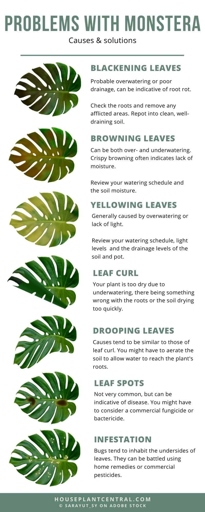
Next, take a look at the plant’s light exposure. If it’s not getting enough sun, however, you’ll need to give it more light. If it’s getting too much sun, move it to a shadier spot.
Monstera adansonii prefer warm, humid conditions. If the temperature is too hot, however, you’ll need to provide the plant with more ventilation. Finally, check the plant’s temperature. If the temperature is too cold, move the plant to a warmer spot.
By following these simple tips, you can get your Monstera adansonii back to its healthy, green self in no time!
Limit Exposure to Direct Light
If you think this may be the case, try moving your plant to a spot that gets indirect or filtered light. If you notice that your Monstera adansonii leaves are turning yellow, it could be a sign that the plant is getting too much direct light. While Monstera adansonii plants can tolerate some direct sunlight, too much can cause the leaves to turn yellow and eventually brown.
Use Artificial Light
If your Monstera adansonii leaves are turning yellow, it could be due to a lack of artificial light. These plants need bright, indirect light to thrive, so if you’re not providing enough, the leaves will start to turn yellow.
If you can’t provide enough light indoors, you can also try placing it outdoors in a shady spot. Just make sure to bring it back inside before the temperature gets too cold. To fix this, simply move your plant to a brighter spot.
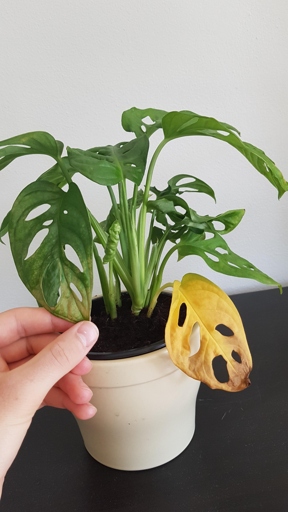
With a little extra light, your Monstera adansonii will soon be looking green and healthy again.
Fertilizer Problems
The most common problem is over-fertilization, which can cause the leaves to turn yellow and eventually drop off. Another problem is using the wrong type of fertilizer, which can also cause the leaves to turn yellow. If the problem persists, then you may need to try a different fertilizer. If you think you may have a fertilizer problem, the first thing you should do is stop fertilizing and see if the problem goes away. Fertilizer problems are one of the most common problems with Monstera adansonii leaves turning yellow. If it does, then you know you were over-fertilizing.
How to Fix
If your Monstera adansonii leaves are turning yellow, there are a few potential causes and solutions. Another potential cause is too much direct sunlight, which can be remedied by moving your plant to a shadier spot. One common cause is lack of nutrients, which can be fixed by fertilizing your plant. Finally, yellowing leaves can also be a sign of overwatering, in which case you should allow the soil to dry out more between waterings.
Leach Off Excess Fertilizer
But what do you do when their leaves start to turn yellow? If you’ve ever had a Monstera adansonii, you know that they’re one of the most beautiful houseplants out there.
One possible reason for this is that you’re giving them too much fertilizer. This can be done by running water through the pot for a few minutes after fertilizing. When you fertilize your Monstera, make sure to leach off any excess fertilizer before it has a chance to build up in the soil.
If you think you may have already given your Monstera too much fertilizer, you can try flushing the soil with water to leach out the excess. Be sure to do this slowly and carefully, as too much water can also damage the roots.
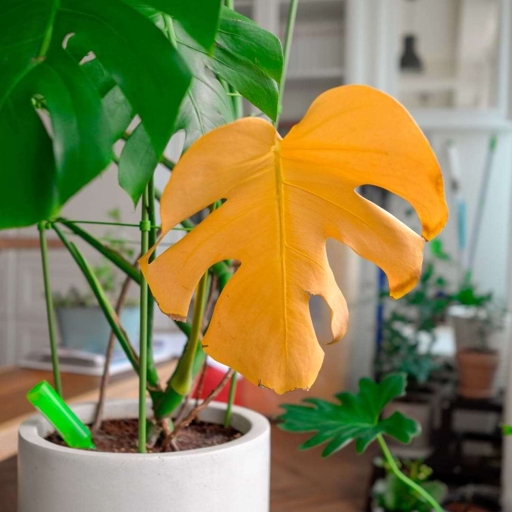
Once you’ve leached out the excess fertilizer, your Monstera should start to recover and the leaves should return to their normal color.
Withhold Fertilizer for Awhile
If you think you might have over-fertilized, flush the soil with water to remove any excess nutrients. Then, withhold fertilizer for a few weeks to give the plant a chance to recover. Over-fertilizing can lead to nutrient burn, which can cause leaves to turn yellow. If your Monstera adansonii leaves are turning yellow, it might be time to withhold fertilizer for a while.
Follow The Fertilizer Guide
Fertilizing your plant is a great way to give it the boost it needs to stay healthy and green. If you’re noticing that your Monstera adansonii leaves are turning yellow, it’s likely due to a lack of nutrients.
Be sure to follow the fertilizer guide that came with your plant to avoid over-fertilizing, which can actually do more harm than good. When it comes to fertilizing, more is not always better.

With regular fertilizing, you should see a noticeable difference in the health of your Monstera adansonii. If you’re not sure how often to fertilize, a good rule of thumb is to do it every other week during the growing season and every month during the winter.
Check And Follow Fertilizer Label
If your Monstera adansonii leaves are turning yellow, it’s important to check the fertilizer label and follow the instructions. Over-fertilizing can lead to leaf yellowing, so it’s important to follow the directions on the label. If you’re not sure how much to fertilize, ask a nursery or gardening expert for help.
Repot The Monstera
Monsteras are fast-growing plants and can quickly outgrow their pots. This can cause the leaves to turn yellow. If you notice your Monstera adansonii leaves turning yellow, it may be time to repot the plant. When this happens, the roots start to crowd the pot and the plant can become stressed.

To repot a Monstera, choose a pot that is 2-3 inches wider than the current pot. Be sure to use a well-draining potting mix. Water well and keep the plant in a warm, bright spot. Gently remove the plant from the pot and loosen the roots. Place the plant in the new pot and fill in around the roots with potting mix.
If you see roots, it’s time to repot. If you think your Monstera may be rootbound, look for roots growing out of the drainage holes in the pot.
Diseases
If your Monstera adansonii leaves are turning yellow, it could be due to a number of diseases. These include bacterial leaf spot, fungal leaf spot, or even viral leaf spot. While these diseases can be unsightly, they are usually not deadly to the plant. However, if left untreated, they can cause the plant to become stunted or even die.

This bacteria thrives in wet, humid conditions and can cause the leaves of your plant to turn yellow and develop brown spots. Bacterial leaf spot is caused by a bacteria called Xanthomonas campestris. You can also try spraying the plant with a copper-based fungicide. To treat this disease, you will need to remove any affected leaves and destroy them.
You can also try spraying the plant with a fungicide. These fungi thrive in warm, humid conditions and can cause the leaves of your plant to turn yellow and develop brown or black spots. Fungal leaf spot is caused by a number of different fungi, including Alternaria, Colletotrichum, and Phyllosticta. To treat this disease, you will need to remove any affected leaves and destroy them.
Viral leaf spot is caused by a virus, such as the cucumber mosaic virus. This virus can cause the leaves of your plant to turn yellow and develop brown or black spots. You can also try spraying the plant with an insecticide. To treat this disease, you will need to remove any affected leaves and destroy them.
Bacterial Leaf Spot
There are a few things you can do to prevent or treat this problem. The leaves will turn yellow and eventually brown and fall off the plant. Bacterial leaf spot is a common problem for Monstera adansonii plants.
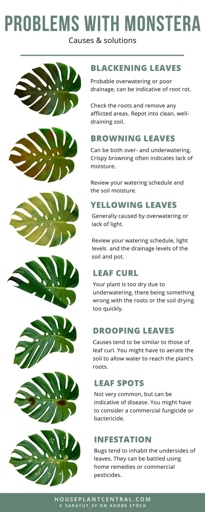
This will help to prevent the spread of the bacteria. First, make sure you are not over-watering your plant. Second, try to keep the leaves dry, especially if you live in an area with high humidity. Third, if you see any affected leaves, remove them from the plant. too much water can lead to leaf spot.
If you have leaf spot, you can try treating it with a copper fungicide. This can be found at most garden stores. You may need to treat the plant a few times to get rid of the leaf spot completely. Be sure to follow the directions on the package.
Anthracnose
Anthracnose is a fungal disease that affects a variety of plants, including Monstera adansonii. The disease is spread by water, wind, and insects, and can be difficult to control once it takes hold. If the disease does take hold, there are a number of fungicides that can be used to treat it. If your Monstera adansonii leaves are turning yellow, it could be due to anthracnose. Symptoms of anthracnose include yellowing leaves, brown spots, and wilting. To prevent anthracnose, water your Monstera adansonii from the bottom up, avoid getting the leaves wet, and remove any affected leaves immediately.
Leaf Rust
There are several reasons why this happens, but the most common one is lack of humidity. Leaf rust is a common problem for Monstera adansonii plants. The leaves turn yellow and eventually fall off, leaving the plant looking bare and unhealthy. Monstera adansonii plants need high humidity to thrive, so if the air around them is too dry, the leaves will start to turn yellow and rust.
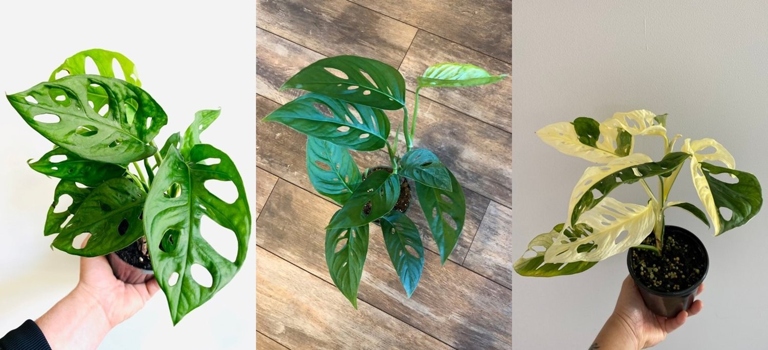
Another solution is to place the plant in a room with a humidifier. This will help to increase the humidity around the plant and prevent the leaves from rusting. There are a few ways to solve this problem. One is to mist the leaves regularly with water. This will also help to increase the humidity around the plant and keep the leaves from rusting.
If you live in an area with low humidity, it may be necessary to mist the leaves daily or even multiple times per day. If the roots are sitting in water, they will start to rot and this will also cause the leaves to turn yellow and rust. It is also important to make sure that the plant has good drainage.
If you follow these tips, you should be able to keep your Monstera adansonii plant healthy and prevent the leaves from rusting.
How to Fix
If your Monstera adansonii leaves are turning yellow, it could be due to a number of reasons. Here are a few possible solutions:
If the soil is too dry, the leaves will start to turn yellow. Check the soil. 1. Make sure to keep the soil moist but not soggy.
Check the light. If the plant is in too much direct sunlight, the leaves will start to turn yellow. Monstera adansonii needs bright, indirect light. 2.

Monstera adansonii prefers warm temperatures. 3. If the plant is in a too cool environment, the leaves will start to turn yellow. Check the temperature.
Check for pests. 4. Inspect the plant carefully and remove any pests you find. If there are pests on the plant, they could be causing the leaves to turn yellow.
If the plant is suffering from a disease, that could be causing the leaves to turn yellow. Check for diseases. Treat the plant according to the specific disease. 5.
If you follow these steps and your Monstera adansonii leaves are still turning yellow, it might be time to consult with a professional.
Remove The Infected Parts
If your Monstera adansonii leaves are turning yellow, it’s important to take action to remove the infected parts of the plant. Otherwise, the infection could spread and kill the plant.
To remove the infected parts of the plant, first, cut off any yellow leaves. Once you’ve removed the infected parts, dispose of them in the trash. Finally, remove any yellow flowers. Then, cut off any stems that have yellow leaves.

So, it’s important to take action to remove the infected parts of the plant as soon as you notice the problem. If you don’t remove the infected parts of the plant, the infection could spread. The infection could spread to the roots, which could kill the plant.
Always Use Sterile Tools
One possibility is that you’re not using sterile tools when you’re handling the plant. It’s important to always use sterile tools when you’re working with plants, as this will help to prevent the spread of diseases. If you’re noticing that your Monstera adansonii leaves are turning yellow, it could be due to a number of reasons. Make sure to clean your tools with rubbing alcohol or a bleach solution before each use, and always handle the plant with clean hands.
Make sure to water the plant thoroughly, and then allow the soil to dry out slightly before watering again. If the soil is too dry, the leaves will start to turn yellow. Monstera adansonii plants need to be watered regularly, and the soil should be kept moist but not soggy. Another possibility is that the plant is not getting enough water.

They can help you to diagnose the problem and find a solution that will work for your plant. If you’re still having trouble, it’s best to consult with a professional.
Treat with Chemicals (Fungicide, DIY solutions)
Treat the plant with a fungicide, or try a DIY solution like mixing 1 part milk and 1 part water and spraying the plant with the mixture. If your Monstera adansonii leaves are turning yellow, it’s likely due to a fungal infection.
Keep Your Plant Away from Stressful Conditions
If your Monstera adansonii leaves are turning yellow, it may be due to stress. There are a few things that can cause stress to your plant, including:
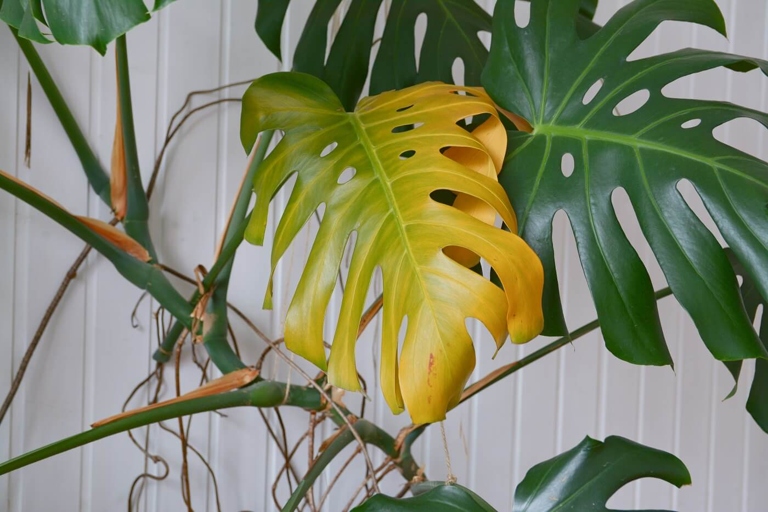
-Changes in temperature: Monsteras prefer warm temperatures, so if the temperature in your home or office drops suddenly, it can cause stress to your plant.
If the light in your home or office changes suddenly (for example, if you move your plant to a new location), it can cause stress to your plant. -Changes in light: Monsteras need bright, indirect light to thrive.
If you change your watering schedule suddenly (for example, if you start watering your plant more or less often), it can cause stress to your plant. -Changes in watering: Monsteras like to be kept evenly moist, but not soggy.
To avoid stressing your Monstera adansonii, make sure to keep it in a stable environment with consistent temperature, light, and watering.
Dispose A Severely Diseased Plant
If you have a Monstera adansonii plant that is severely diseased, it is important to dispose of it properly. Diseased plants can spread disease to other plants, so it is important to remove them from your home or garden as soon as possible.
This will prevent the spread of disease to other plants and will also help to keep your home or garden clean. The best way to dispose of a diseased plant is to bury it. You can also burn the plant, but this should only be done if you are sure that the plant is completely dead.
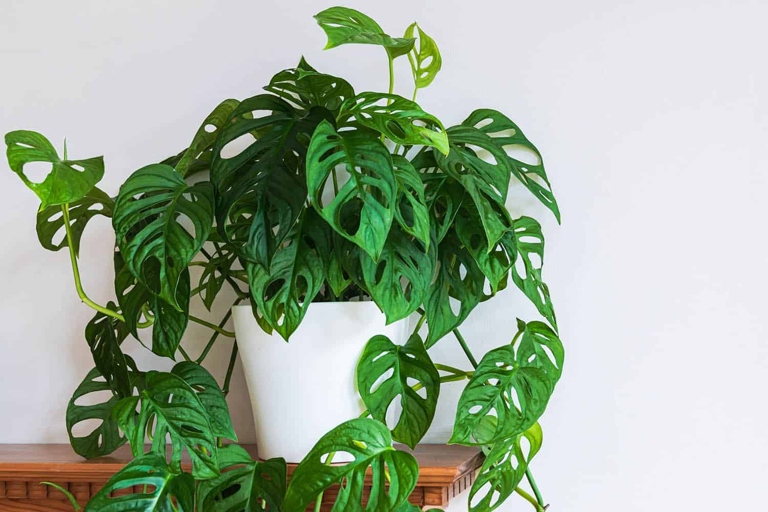
If you have a diseased plant, it is important to take action as soon as possible to prevent the spread of disease. Disposing of the plant properly is the best way to protect your other plants and to keep your home or garden healthy.
Pest Infestation
Common pests that can infest Monstera plants include mealybugs, scale, and spider mites. If you’re noticing your Monstera adansonii leaves turning yellow, it could be due to a pest infestation. These pests can cause your plant to become yellow and sickly looking.
To get rid of pests, you’ll need to treat your plant with an insecticide. Be sure to follow the instructions on the label carefully. You may need to treat your plant multiple times to get rid of all the pests.
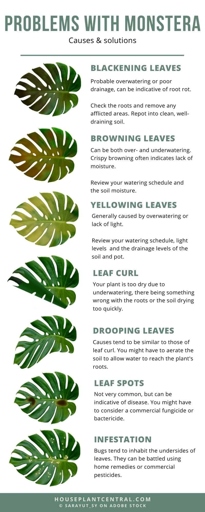
Once your plant is free of pests, be sure to keep an eye out for them in the future. By taking these steps, you can keep your Monstera adansonii healthy and looking its best. Regularly inspect your plant for signs of pests and take action immediately if you see any.
How to Fix
There are a few possible reasons for this and some easy solutions. If your Monstera adansonii leaves are turning yellow, don’t panic!
If your plant is in a low-light spot, try moving it to a brighter location. One reason your plant’s leaves may be turning yellow is that it’s not getting enough light. Monstera adansonii need bright, indirect light to thrive.

These plants like to be kept on the drier side, so make sure you’re not over-watering. Allow the top inch or so of soil to dry out before watering again. Another reason for yellowing leaves could be too much water.
Finally, yellow leaves could be a sign of a nutrient deficiency. You can solve this problem by fertilizing your Monstera adansonii with a plant food that contains iron. If your plant isn’t getting enough iron, for example, its leaves will turn yellow.
With a little troubleshooting, you can get your plant back to looking its best in no time. If your Monstera adansonii leaves are turning yellow, don’t despair! There are a few possible causes and some easy solutions.
Employ Mechanical Control
One common reason for Monstera adansonii leaves turning yellow is a lack of nutrients. These nutrients are essential for healthy leaves, so it’s important to make sure your plant is getting enough of them. The plant may not be getting enough nitrogen, potassium, or magnesium.
You can provide your plant with additional nutrients by fertilizing it regularly. Use a fertilizer that’s high in nitrogen, potassium, and magnesium, and follow the instructions on the package.
The roots may be waterlogged, which can cause the leaves to turn yellow and eventually drop off. If your plant is getting enough nutrients but the leaves are still turning yellow, it could be a sign of too much water.
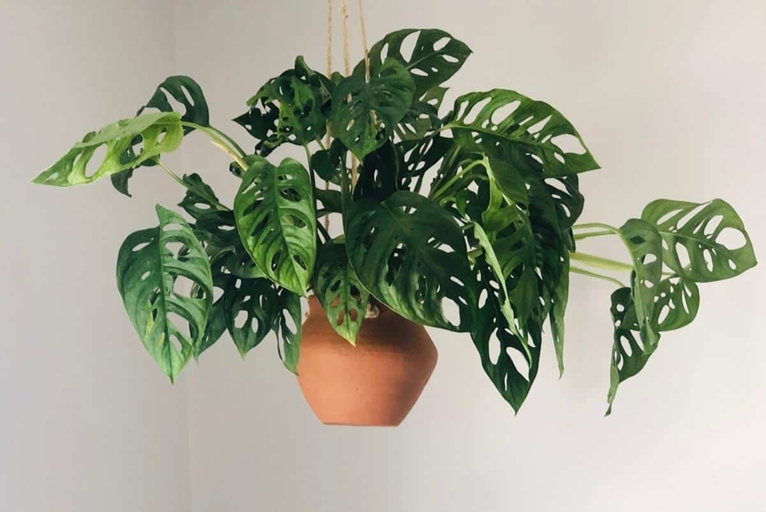
To fix this problem, let the soil dry out completely between waterings. If the leaves are still yellow after a week or two, you may need to repot the plant in dryer soil.
Use Chemicals to Get Rid of Them
If your Monstera adansonii leaves are turning yellow, it could be due to a number of reasons. One possibility is that the plant is not getting enough nutrients. Another possibility is that the plant is being attacked by pests or diseases.
Another way is to provide the plant with more nutrients. One way to solve the problem is to use chemicals to get rid of the pests or diseases.
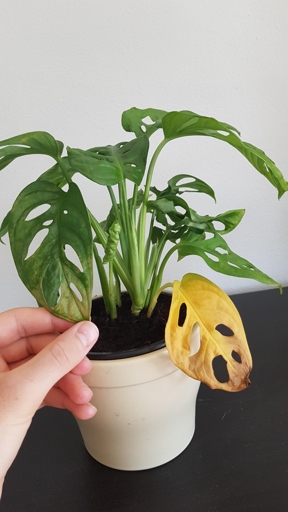
Apply the chemicals only to the affected areas and avoid contact with the leaves, stems, and roots of the plant. If you decide to use chemicals, be sure to follow the instructions on the label carefully.
Prune The Infested Parts
This may mean removing entire leaves or just the affected areas. If your Monstera adansonii leaves are turning yellow, it’s likely due to a pest infestation. Once the pests are gone, your plant should recover and start to produce new, healthy leaves. To get rid of the pests, you’ll need to prune the infested parts of the plant.
Isolate the Plant
If your Monstera adansonii leaves are turning yellow, it could be due to a number of reasons. One possibility is that the plant is not getting enough light. If the plant is not getting enough light, move it to a brighter spot. Monstera adansonii is a jungle plant and needs bright, indirect light to thrive.
Let the soil dry out between watering to prevent this. If the leaves are wet or soggy, they will turn yellow and eventually rot. Monstera adansonii likes to have its roots in moist soil, but the leaves should be dry. Another possibility is that the plant is getting too much water.

If you suspect your plant is getting too much or too little water, you can try to isolate the plant. If the roots are brown and crispy, the plant is not getting enough water. If the roots are white and mushy, the plant is getting too much water. This means taking the plant out of its pot and examining the roots. Adjust your watering schedule accordingly.
Discard Severely Infested Plant
If you have a heavily infested plant, it is best to throw it away to prevent the spread of pests. If your Monstera adansonii plant is severely infested with pests, it is best to discard it. Pests can cause leaves to turn yellow and can be difficult to control.
Can Yellow Monstera Leaves Turn Green Again?
Monsteras are a popular houseplant because of their large, glossy leaves. But what do you do when those leaves start to turn yellow?
It could be due to too much sun, not enough water, or a nutrient deficiency. There are a few reasons why your Monstera leaves might be turning yellow.

And if it’s lacking nutrients, you can give it a fertilizer boost. If your Monstera is getting too much sun, you’ll need to move it to a shadier spot. If it’s not getting enough water, make sure to water it more frequently.
But if the leaves are already yellow and starting to fall off, they’re probably not going to turn green again. In most cases, you can get your Monstera’s leaves to turn green again by addressing the underlying issue.
Why Are My Monstera adansonii Leaves Curling?
Finally, it could be that the plant is stressed due to too much or too little fertilizer. Make sure to water your plant regularly and keep the soil moist. Move it to a brighter spot and see if that helps. Another possibility is that the plant is not getting enough light. If your Monstera adansonii leaves are curling, it could be due to a number of reasons. Try adjusting your fertilizer schedule and see if that makes a difference. The most common reason is that the plant is not getting enough water.
Why Are My Monstera adansonii Leaves Wilting?
Another possible reason for wilting leaves is that the plant is not getting enough light. Finally, wilting leaves can also be a sign of stress or disease. If the leaves are wilting and turning yellow, it may be a sign of a disease, such as bacterial leaf spot or fungal leaf spot. If you have recently moved your plant, it may be experiencing transplant shock. There are a few reasons your Monstera adansonii leaves may be wilting. If you think your plant may be sick, consult a professional for diagnosis and treatment. Make sure to water your plant regularly, and if the leaves are still wilting, you may need to increase the amount of water you are giving it. Move your plant to a location where it will get more light, and if the leaves are still wilting, you may need to increase the amount of light it is getting. The most common reason is that the plant is not getting enough water.
Final Words
When your Monstera adansonii leaves start to turn yellow, it can be a sign that something is wrong with the plant. There are a few possible reasons for this, including too much sun, too little water, or a nutrient deficiency.
And if you think it might be lacking nutrients, you can try fertilizing it. If it’s not getting enough water, make sure to water it more often. If you think that too much sun is the problem, try moving your plant to a shadier spot.

They can help you figure out what the problem is and how to fix it. If your Monstera adansonii leaves are still turning yellow after you’ve tried these solutions, it’s best to consult a professional.
Frequently Asked Questions
1. Why are my Monstera adansonii leaves turning yellow?
There are several possible reasons for this, including too much sun, too little water, or pests.
2. What can I do to fix the problem?
If the leaves are turning yellow due to too much sun, try moving the plant to a shadier spot. If the problem is too little water, make sure to water the plant more frequently. If you suspect pests, inspect the plant carefully and treat accordingly.
3. Why do Monstera adansonii leaves turn yellow in the first place?
The most likely reason is that the plant is not getting enough water or nutrients.
4. What are the consequences of my Monstera adansonii leaves turning yellow?
If the leaves turn yellow and fall off the plant, it will be less aesthetically pleasing. In extreme cases, the plant may die.
5. Can I prevent my Monstera adansonii leaves from turning yellow?
Yes, by making sure the plant gets enough water and nutrients, and by protecting it from pests.
Final thoughts
If your Monstera adansonii leaves are turning yellow, it could be due to a number of reasons. It could be a lack of nutrients, too much sun, or too much water. However, there are solutions to these problems. By giving your plant the proper care, you can prevent your leaves from turning yellow.
